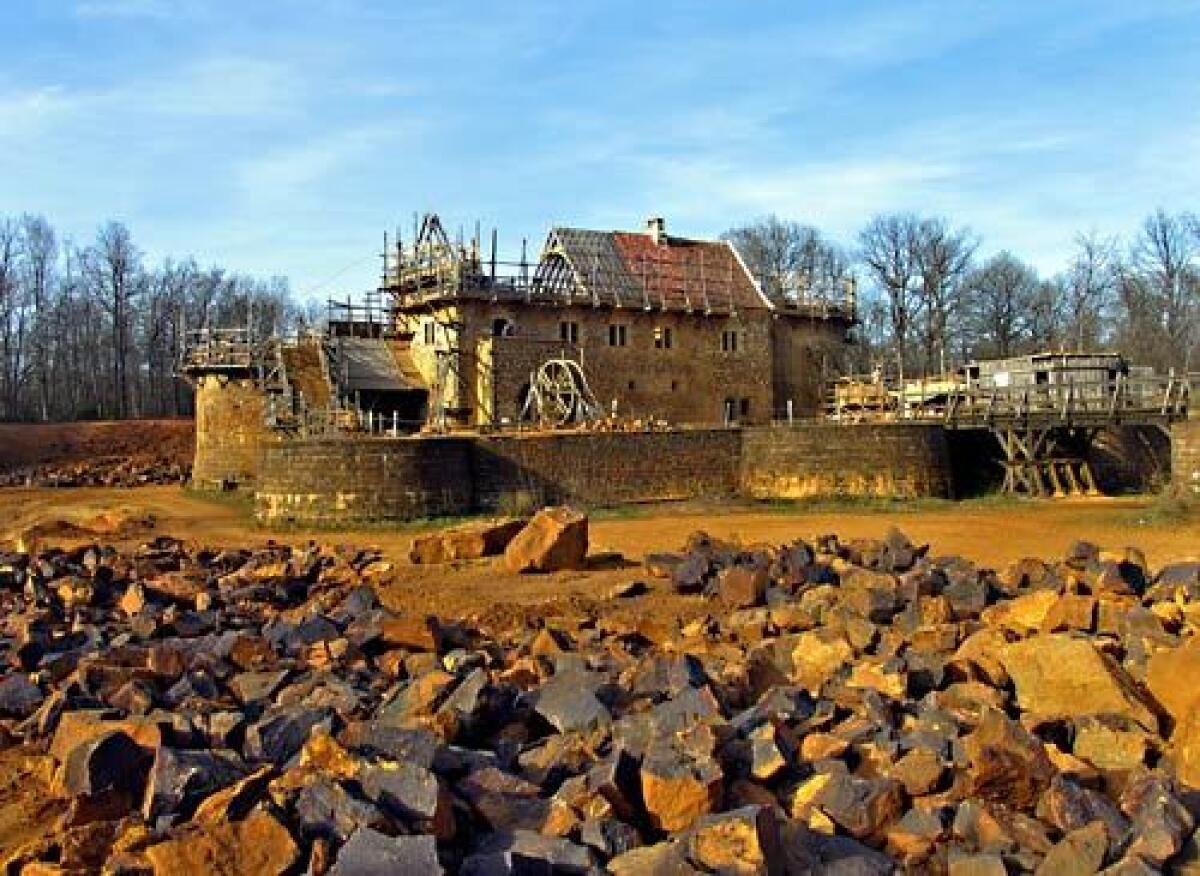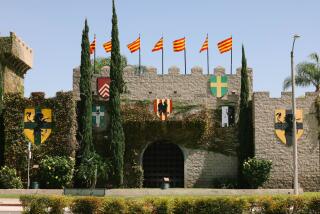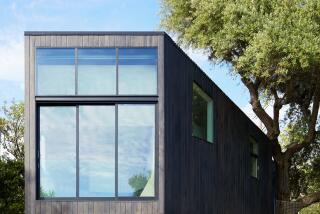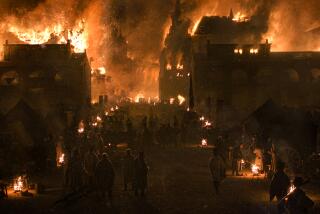In France, castle Guédelon being built to medieval standards

When my niece, Sarah, was little, she returned from a long trip to Europe with her parents and announced she never wanted to set foot in another museum. Children who travel abroad are lucky, but on another level you have to pity the poor kids dragged through ancient ruins, art galleries, cathedrals and castles, until they’re ready to drop, when all they really want is a Game Boy and a hot dog.
But in the Burgundy region of France, there’s a castle that fascinates children — and it isn’t another Euro Disney. It’s Guédelon, about 100 miles southeast of Paris, where history is in the remaking at a medieval stronghold being built with only 13th century materials and techniques. The idea comes right out of one of those marvelously illustrated children’s books by David Macaulay — “Cathedral,” “Castle,” “City,” “Pyramid” — that explains how great historic monuments took shape. Only Guédelon is real.
The project was the brainchild of architectural historian and conservationist Michel Guyot, owner of a 17th century château, also open to visitors, in the nearby village of St.-Fargeau. While restoring the complex, Guyot discovered remnants of a medieval stronghold. Et voilà: the seed from which Guédelon was born.
The idea was considered crazy at first, but Guyot and co-owner Maryline Martin persevered, raising money, getting permits, buying a site and finally breaking ground in 1997. With the castle half-finished and attracting 300,000 visitors a year, it no longer seems like a harebrained scheme. Now it answers the question visitors inevitably ask at marvels such as Nôtre Dame de Paris and Chartres: How did medieval workmen do this without cranes, bulldozers, power saws and drills?
Not quickly, to begin with. Guédelon, conceived as the modest stronghold of a low-ranking feudal baron, won’t be completed until 2023, if all goes well. That would make it 26 years from start to finish, about 10 years longer than it would have taken to build in the early 13th century. The relatively slow pace of contemporary construction is due to the size of the team — about 50 workers — and the winter hiatus.
This season it’s hoped that the cross-ribbed vault of the lord’s chamber and the roof of the great hall will be completed, requiring the fabrication of 50,000 clay tiles fired in an on-site kiln. Most of the materials used at Guédelon come from the property, chosen because it has such assets as a natural water source, sandstone quarry and oak forest.
Tours begin in a clearing where models illustrate the evolution of castles, from the fortification of farmhouses around the 9th century to the Guédelon-style strongholds with moats, towers, curtain walls and courtyards. They helped secure territories added by conquest to the Kingdom of France.
The castle is set in a hollowed-out dish of earth adjacent to the quarry where stone is excavated and dressed by masons. A fixed bridge leads across a dry moat to a two-story dwelling with a kitchen, storeroom, great hall and lord’s chamber. In the woods nearby an entire medieval village has taken shape, complete with a blacksmith, rope and basket-making shop, tile factory and stables for horses used to haul materials.
Visitors are allowed to walk through the construction site. Along the way artisans stop and explain how they quarry and cut stone, build and level walls, raise roof beams, make vaulted ceilings and lift heavy weights using hand winches, pulley and treadmill-driven cranes known as squirrel cages. Kids can also take hands-on workshops to learn the stone-carving and geometric techniques of 13th century builders.
Construction at Guédelon is based on studies of medieval stained glass, illuminated manuscripts, financial records and castles such as nearby Ratilly, dating from the same period. An advisory committee made up of archaeologists and art historians routinely inspects the site to assess authenticity and learn from the work in progress.
There have been some concessions to the 21st century. Workers sometimes wear safety glasses, hard hats and steel-tipped boots. The parking lot is big enough to accommodate school buses. There are modern toilets, a restaurant and a shop. But on the threshold of the castle nothing else jars. Its fixed bridge leads directly to the Middle Ages.
More to Read
Sign up for The Wild
We’ll help you find the best places to hike, bike and run, as well as the perfect silent spots for meditation and yoga.
You may occasionally receive promotional content from the Los Angeles Times.






